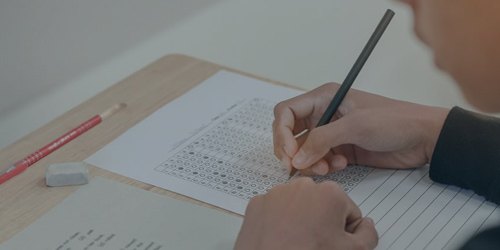JEE Mains Maths Syllabus covers a total of 16 units. Each and every concept included in JEE Main syllabus for Maths is important and the questions could be expected from anywhere. National Testing Agency (NTA) has released the syllabus of JEE Main 2021. For mathematics, the students need to have rigorous practice. The more problems of Maths you will practice, the better will be your accuracy and speed. Students are thus advised to prepare a study plan by for Mathematics and give sufficient time to problem-solving strategy.
JEE Main exam will have 30 questions (20 MCQs + 10 numerical value) from Mathematics where 25 have to be attempted. The students can refer to the detailed list of JEE Main Maths syllabus, mentioned below and accordingly plan an effective preparation strategy.

Read Here: JEE Main Physics Syllabus
UNIT 1: SETS, RELATIONS AND FUNCTIONS:
Sets and their representation: Union, intersection and complement of sets and their algebraic properties; Power set; Relation, Type of relations, equivalence relations, functions; one-one, into and onto functions, the composition of functions.
UNIT 2: COMPLEX NUMBERS AND QUADRATIC EQUATIONS:
Complex numbers as ordered pairs of reals, Representation of complex numbers in the form a + ib and their representation in a plane, Argand diagram, algebra of complex number, modulus and argument (or amplitude) of a complex number, square root of a complex number, triangle inequality, Quadratic equations in real and complex number system and their solutions Relations between roots and coefficient, nature of roots, the formation of quadratic equations with given roots.
UNIT 3: MATRICES AND DETERMINANTS:
Matrices, algebra of matrices, type of matrices, determinants and matrices of order two and three, properties of determinants, evaluation of determinants, area of triangles using determinants, Adjoint and evaluation of inverse of a square matrix using determinants and elementary transformations, Test of consistency and solution of simultaneous linear equations in two or three variables using determinants and matrices.
UNIT 4: PERMUTATIONS AND COMBINATIONS:
The fundamental principle of counting, permutation as an arrangement and combination as section, Meaning of P (n,r) and C (n,r), simple applications.
UNIT 5: MATHEMATICAL INDUCTIONS:
Principle of Mathematical Induction and its simple applications.
UNIT 6: BINOMIAL THEOREM AND ITS SIMPLE APPLICATIONS:
Binomial theorem for a positive integral index, general term and middle term, properties of Binomial coefficients and simple applications.
UNIT 7: SEQUENCE AND SERIES:
Arithmetic and Geometric progressions, insertion of arithmetic, geometric means between two given numbers, Relation between A.M and G.M sum up to n terms of special series; Sn, Sn2, Sn3. Arithmetic-Geometric progression.
UNIT 8: LIMIT, CONTINUITY AND DIFFERENTIABILITY:
Real–valued functions, algebra of functions, polynomials, rational, trigonometric, logarithmic and exponential functions, inverse function. Graphs of simple functions. Limits, continuity and differentiability. Differentiation of the sum, difference, product, and quotient of two functions. Differentiation of trigonometric, inverse trigonometric, logarithmic, exponential, composite and implicit functions; derivatives of order up to two, Rolle’s and Lagrange's Mean value Theorems, Applications of derivatives: Rate of change of quantities, monotonic increasing and decreasing functions, Maxima and minima of functions of one variable, tangents and normal.
UNIT 9: INTEGRAL CALCULAS:
Integral as an anti-derivative, Fundamental Integrals involving algebraic, trigonometric, exponential and logarithms functions. Integrations by substitution, by parts and by partial functions. Integration using trigonometric identities. Evaluation of simple integrals of the type Integral as limit of a sum. The fundamental theorem of calculus, properties of definite integrals. Evaluation of definite integrals, determining areas of the regions bounded by simple curves in standard form.
UNIT 10: DIFFRENTIAL EQUATIONS Ordinary differential equations, their order and degree, the formation of differential equations, solution of differential equation by the method of separation of variables, solution of a homogeneous and linear differential equation of the type
UNIT 11: CO-ORDINATE GEOMETRY
Cartesian system of rectangular coordinates in a plane, distance formula, sections formula, locus and its equation, translation of axes, the slope of a line, parallel and perpendicular lines, intercepts of a line on the co-ordinate axis.
Straight-line: Various forms of equations of a line, intersection of lines, angles between two lines, conditions for concurrence of three lines, the distance of a point form a line, equations of internal and external by sectors of angles between two lines coordinate of the centroid, orthocentre and circumcentre of a triangle, equation of the family of lines passing through the point of intersection of two lines.
Circle, conic sections: A standard form of equations of a circle, the general form of the equation of a circle, its radius and central, equation of a circle when the endpoints of a diameter are given, points of intersection of a line and a circle with the centre at the origin and condition for a line to be tangent to a circle, equation of the tangent, sections of conics, equations of conic sections (parabola, ellipse and hyperbola) in standard forms, condition for Y = mx +c to be a tangent and point (s) of tangency.
UNIT 12: THREE DIMENSIONAL GEOMETRY
Coordinates of a point in space, the distance between two points, section formula, directions ratios and direction cosines, the angle between two intersecting lines. Skew lines, the shortest distance between them and its equation. Equations of a line and a plane in different forms, the intersection of a line and a plane, coplanar lines
UNIT 13: VECTOR ALGEBRA
Vectors and scalars, the addition of vectors, components of a vector in two dimensions and three-dimensional space, scalar and vector products, scalar and vector triple product.
UNIT 14: STATISTICS AND PROBABILITY
Measures of discretion; calculation of mean, median, mode of grouped and ungrouped data calculation of standard deviation, variance and mean deviation for grouped and ungrouped data.
Probability: Probability of an event, addition and multiplication theorems of probability, Baye's theorem, probability distribution of a random variate, Bernoulli trials and binomial distribution.
UNIT 15: TRIGONOMETRY
Trigonometrical identities and equations, trigonometrical functions, inverse trigonometrical functions and their properties, heights and distance.
UNIT 16: MATHEMATICAL REASONING
Statement logical operations and, or, implies, implied by, if and only if, understanding of tautology, contradiction, converse and contrapositive
Also Read, JEE Main Chemistry Syllabus
Know more about: Trending engineering branches which are highest paid











